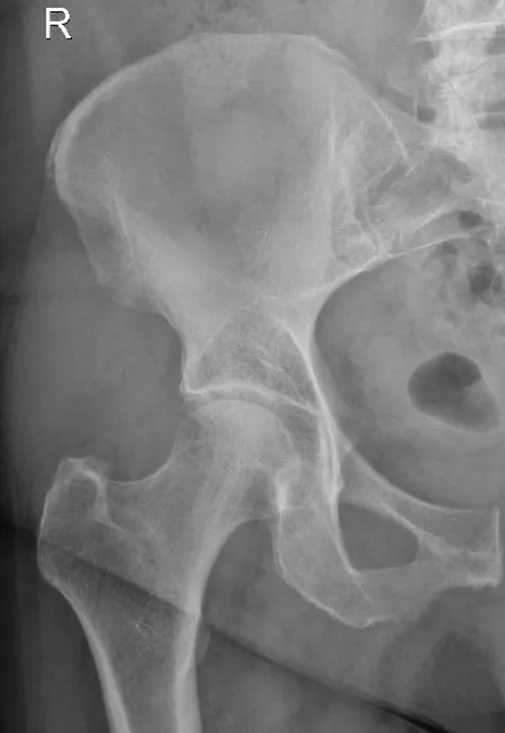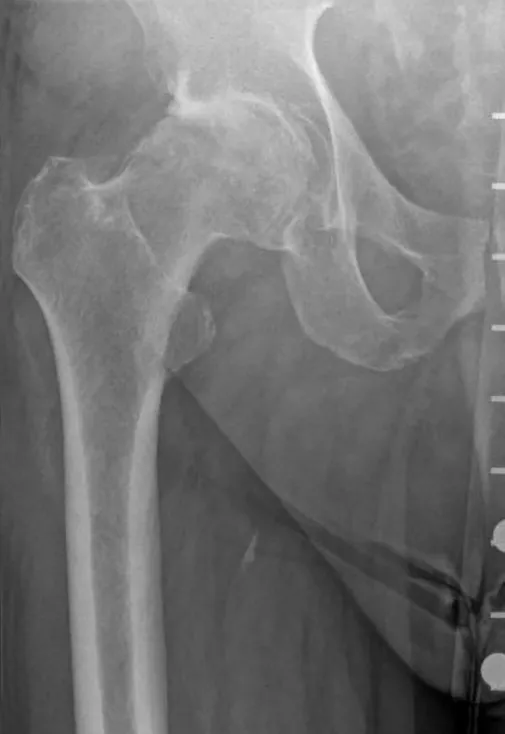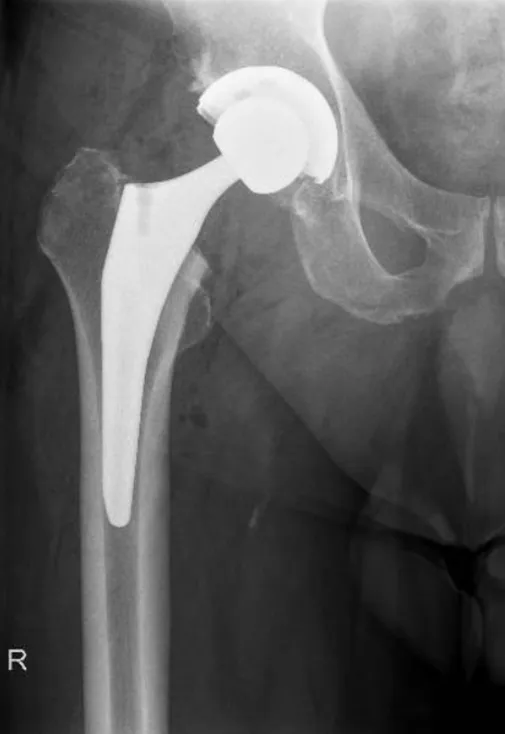Total Hip Replacement
What is a hip replacement?
Your hip joint is a ball and socket joint and allows your leg to move freely. The “ball” is at the top of the thigh bone (femur) and the “socket” is a cup shaped inside the pelvis. See xray below. The ball and the socket are lined with cartilage that allow smooth friction free movement and this is lubricated by a synovial fluid that sits within the joint. The joint is reinforced by ligaments, which are fibrous strong tissue and surrounded by a fibrous joint capsule.
Osteoarthritis is the main type of arthritis. This was traditionally thought to be ‘wear and tear’ but we now know that it is more complex than that. Osteoarthritis causes multiple changes in the joint. It causes bony spurs (extra bone) to grow at the edges, it can change the shape of the bones, it can stiffen the capsule, as well as a loss of cartilage on the surface of the bones. This can result in generalised aching pain, sharp pains, stiffness in the joint and reduced range of motion. Other type of arthritis include rheumatoid arthritis and post traumatic arthritis. With hip arthritis the common symptoms include difficulty reaching to your feet to put socks on/off, difficulty getting in/out of a car, walking with a limp due to pain or bony changes causing a leg length difference and difficulty getting out of a chair.
 Normal Hip Xray
Normal Hip Xray
 OA Hip Xray
OA Hip Xray
The indication for a hip replacement include:
- Severe pain that is not controlled by medication and is affecting your ability to sleep, work, or do your everyday activities
- Joint stiffness that limits your ability to move your leg or walk
It can be a difficult decision to decide whether to have a hip replacement or not. There are support tools hosted by the National Joint Registry and a Dorset version. Ultimately you may wish to discuss this with our hip surgeons, so please contact the team to arrange an appointment.
A THR involves replacing the two ‘worn’ or damaged sides of the joint – the ball and the socket, with an artificial one called a prothesis. Usually at PH UHD we usually use a hybrid prosthesis – the metal alloy stem is cemented into the centre of the femur with a ceramic ball as the head. The metal cup, with a plastic internal liner is press fitted in the pelvis and is uncemented. They use special cement to secure the prosthesis to the bone. Sometimes they use a different prosthesis to this depending on your age, other medical conditions and lifestyle factors.


Recovery
This surgery usually requires a hospital stay of 1-3 days. We expect most people to be able to walk with crutches and complete a flight of stairs on discharge, but this depends on your level of mobility pre-operatively.
Recovery after a THR can take a long time. Most people are doing well by 3 months, but improvement will continue up to 1 year after your replacement.
A hip replacement is designed to last for approximately 15 years. For some people is does not last this long, but some people can retain a prosthesis for 25 years! If you need another hip replacement, this surgery would be called a revision. Revision surgeries are a bit more complicated as the surgery is longer, requires different and longer prostheses, and often the patients are older.
Private Health UHD are now offering a private exercise class specifically for patients post hip surgery at Christchurch Hospital. For more information please click here.
Where?
Currently these operations take place at Bournemouth Hospital. In 2026, the elective orthopaedic service moves to Poole Hospital, and we therefore will be establishing a private ward on the Poole site.

